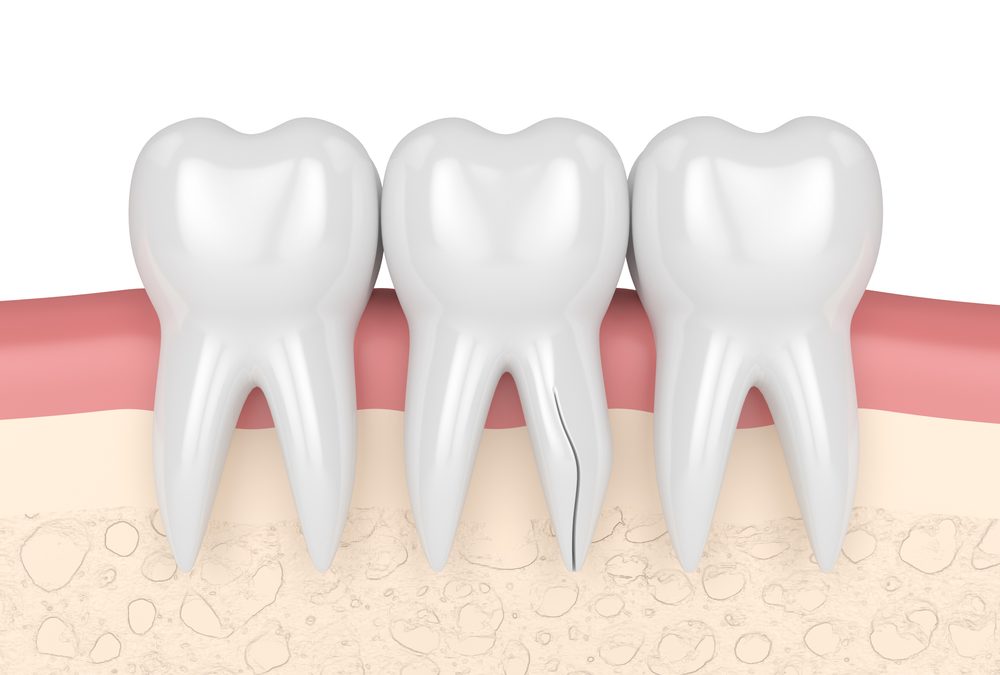
How Dental Implants Can Help Retain Dentures
June 10, 2021
Infection Signs to Watch for After Oral Surgery
August 2, 2021Cracked tooth: Symptoms, diagnosis, and treatment
A tooth fracture is a break or crack in the enamel and dentin of your tooth. Fractures are heavily restored teeth or teeth with underlying large cavities. Often, tooth fractures occur in the front teeth in the upper jaw because of their position in the oral cavity. The severity of the fracture depends upon the energy, shape, and resilience of the impacting object. Moreover, the direction of the impact on the oral structures determines the implications of dental trauma.
Altogether, depending on the crack position and degree, the result from the fracture can be catastrophic. This necessitates diagnosis of any cracks and development of a course of treatment, thus ensuring tooth longevity.
The question is, how do you identify a crack in your tooth, thus avoiding a catastrophic end like the complete loss of the tooth?
Whar Are the Symptoms of a Cracked Tooth?
- Tooth pain when biting or chewing.
This is often the first indicator of a cracked tooth. The pain can be due to the swelling of the gum and surrounding tissue. Notably, the fracture might expose your pulp to the different foods you partake. Additionally, the fractures might give bacteria access to your pulp & tooth nerves, making it exceedingly susceptible. Altogether, these cause pain when biting and chewing.
- Increased sensitivity.
You might start to notice that you experience pain when you bite into hot foods or drink a cold beverage. Further, you might begin to experience greater sensitivity when eating sweet or sour foods. This increased sensitivity is a sign you have a cracked tooth.
- Infections.
When a cracked tooth remains untreated, your pulp becomes infected. These infections cause increased pain, bad breath, and increased swelling around the affected tooth. When it remains unchecked, the infection spreads from the tooth to the jaw and finally to the surrounding bones and soft tissues.
- No visible signs.
With a cavity, it is possible to spot signs of decay. For instance, you might see a dark spot on the tooth’s surface or signs of enamel erosion. For a cracked tooth, you see no apparent symptoms. You experience the discomfort of biting and chewing without any indicators that you can quickly point out.
Types of Tooth Fractures
Tooth fractures can vary in length, depth, and location of the tooth.
- Craze lines – These are simple vertical lines that appear on the enamel. These types of fractures are common in adults and will often not deepen further into the tooth.
- Fractured cusp- The cusp is an elevation that helps with chewing. A fracture on the cusp alludes to a crack on this surface, which should affect chewing and alter the tooth’s anatomy.
- Cracked tooth- In extreme cases, the damage to the tooth can extend to the pulp. Even worse, the crack might reach the gum line necessitating a root canal to correct the fracture.
- Split tooth- The crack goes to the root, thus causing a separation from a section of the tooth. The result of a split tooth is two distinct segments that might mean the tooth can no longer be salvaged.
- Vertical root fracture-The crack begins at the root of the tooth and moves upwards towards the cusp. The surrounding bone and gum material swells and becomes irritated as a result of the expose.
Factors that May Increase the Chances of a Tooth Fracture
Several factors might increase the chances of tooth fractures. These include:
- Teeth with current tooth decay or damage.
- Chewing on hard foods like hard candy.
- Collision sports like hockey and football.
- Exposing the tooth to extreme temperatures within a short period.
- Teeth grinding and jaw clenching.
Understanding the signs of a possible tooth fracture is the first step towards the management of the same. Notably, you might require a radiological examination if the fracture involved the pulp. Altogether, tooth fractures require prompt treatment for restoration of their function. When you discover you have the signs of a fractured tooth, seek immediate treatment to avoid a root canal, and in some severe cases, the complete removal of the tooth.




